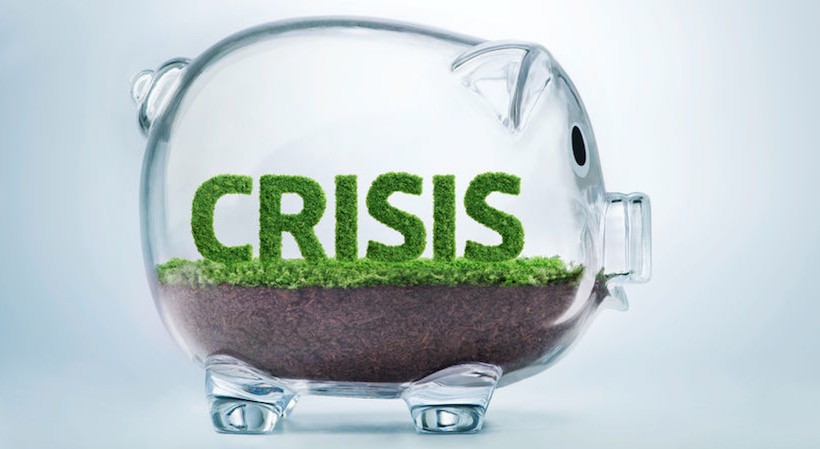As small and medium businesses scramble to stay afloat during the COVID-19 pandemic, the U.S. government has made billions of dollars available in loans to help companies make payroll and stay afloat. At the same time, startups in certain industries such as online learning or grocery delivery may be struggling to keep up with increased demand.
We caught up with Tom Schryver, a visiting lecturer in entrepreneurship and business strategy at the SC Johnson College of Business at Cornell University, to find out what entrepreneurs need to know about SBA loans and other sources of economic support.
The following conversation has been edited for clarity and brevity.
StartupNation exclusive discounts and savings on Dell products and accessories: Learn more here
StartupNation: What do entrepreneurs need know about applying for SBA loans under the Payroll Protection Program?
Tom Schryver: They need to apply quickly. It’s definitely a race to the finish. It really is geared toward maintaining payroll so there are some limits that are coming about in the implementation where it really needs to be focused on covering payroll costs. The maximum amount is set at two and a half times average monthly payroll for the last 12 months, and that doesn’t include compensation above $100,000.
Now the good news is that, as long as the loan proceeds are applied to permissible expenses (things like payroll costs, rent and utilities) the debt will be forgiven. But at least 75 percent of the forgiven amount must be used for payroll.

StartupNation: Applications opened on Friday, April 3, but some banks are not yet accepting applications since the program is so new. Is it better to wait until your primary bank is ready to accept applications or should you just apply wherever you can even if you don’t have an existing relationship?
Wherever you can. There is a lot of demand on the program. The number that I heard is that just on Friday, they had applications for over 13,000 loans across the country asking for over $4 billion. The funding cap is $349 billion, so there is a lot more there but we don’t know how many other applications are in the pipeline.
The other thing is that the people who are responsible for managing these loans, the banks as well as the folks at the SBA, they have a Herculean task. This is being rolled out faster than it has ever been done before and I have tremendous empathy for the people who are trying to make this thing work. If you ever saw the “I Love Lucy” episode where they’re at the chocolate factory and the chocolate starts coming out faster than they can process it… I would rather be at the very beginning, and hope to get paid sooner than in the middle when things start to slow down.
Related: Resources for Small Business Aid Amidst the COVID-19 Crisis
StartupNation: How can how can entrepreneurs demonstrate financial injury for the purposes of this loan? What metrics should they be using?
Tom Schryver: There’s still a lot of speculation on that, and not complete clarity about what those rules are. Based on what I’ve seen, I think these are things that are evolving by the day. I would focus on revenue. If you used to have a physical location that people can’t go to anymore, that’s likely impacted revenue.
That’s going to be the most obvious one. I would also look at supply chain. You can’t sell goods you don’t have. If a company is in a position where they’re selling products that are no longer available because their distribution was unable to supply, it that would also be a case for economic injury. The last one would be availability of employees. If employees were available to work, and now those employees are no longer able to work because of perhaps school closings, that would be another instance where people would have a case for economic injury.
StartupNation: What other economic support is available?
Tom Schryver: I would jump on the Economic Injury Disaster Loan (EIDL) program quickly. EIDEL is being administered directly by the SBA, which is fascinating to me because that’s not normally how the SBA has worked. Up to $200,000 does not require a personal guarantee, which is really interesting and I think helpful for companies that are at a very early stage as they consider raising for-profit capital.
If you’re an entrepreneur thinking about raising money, the more you can do to prove out your business model, the more you can do to show what value you’re creating in this new environment, the better you’ll be at raising some of those funds that are out there and maximizing returns for their limited partners. I would jump on EIDL quickly.
StartupNation: For businesses that don’t qualify for these loans because they’re seeing an uptick in demand rather than a loss of revenue, what options are available for them to scale up quickly?
Tom Schryver: As we all know, this is unprecedented. We’re seeing companies whose businesses have gone absolute gangbusters because they deal with things like delivery services. And so now they’re trying to figure out how they can deal with revenue that it is increasing rapidly. They’re hiring, and they need capital to do that, as well. What I am starting to see happening is economic development agencies and state and local governments are starting to make funds available to those who are growing in addition to the ones that are injured.
I think if you’re an entrepreneur and you’re thinking about access to capital, as much as one tries to be a couple steps ahead, it’s hard to do that. I see entrepreneurs all the time, who realized they needed capital yesterday. That’s frankly too late under normal circumstances, and it just got worse. The people who are seeing two or three steps ahead, you better see three or four steps ahead now. And if you weren’t seeing a couple steps ahead, you better start doing so now, because not only has the world changed from a supply and demand perspective, but the same is true for capital.
Sign Up: Receive the StartupNation newsletter!
StartupNation: What other resources should entrepreneurs be investigating?
Tom Schryver: There’s no better time than the present to look at your local, regional or state economic development agency and economic development supporters. There’s a network of small business development centers, there are groups like SCORE. I’m with a land grant university that has programs that support entrepreneurs and give advice. This is obviously hugely disruptive and tragic on so many levels.
What I’m also seeing is a huge number of people who genuinely want to help and genuinely want to make a difference. And there’s a lot of people out there who are ready, willing and able to help entrepreneurs weather the storm to the extent they can, and even grow and thrive under these changing conditions. What that means is that entrepreneurs must have a sense of what they’re looking for and being willing to ask for it.
I would just encourage everybody to do that.
Editorial note: Information related to SBA programs and other COVID-19 small business funding is changing rapidly. Please note that the above is based on current details of these programs, and are subject to change. We will monitor and update this information as it becomes available.
Supported by Rapid Finance






